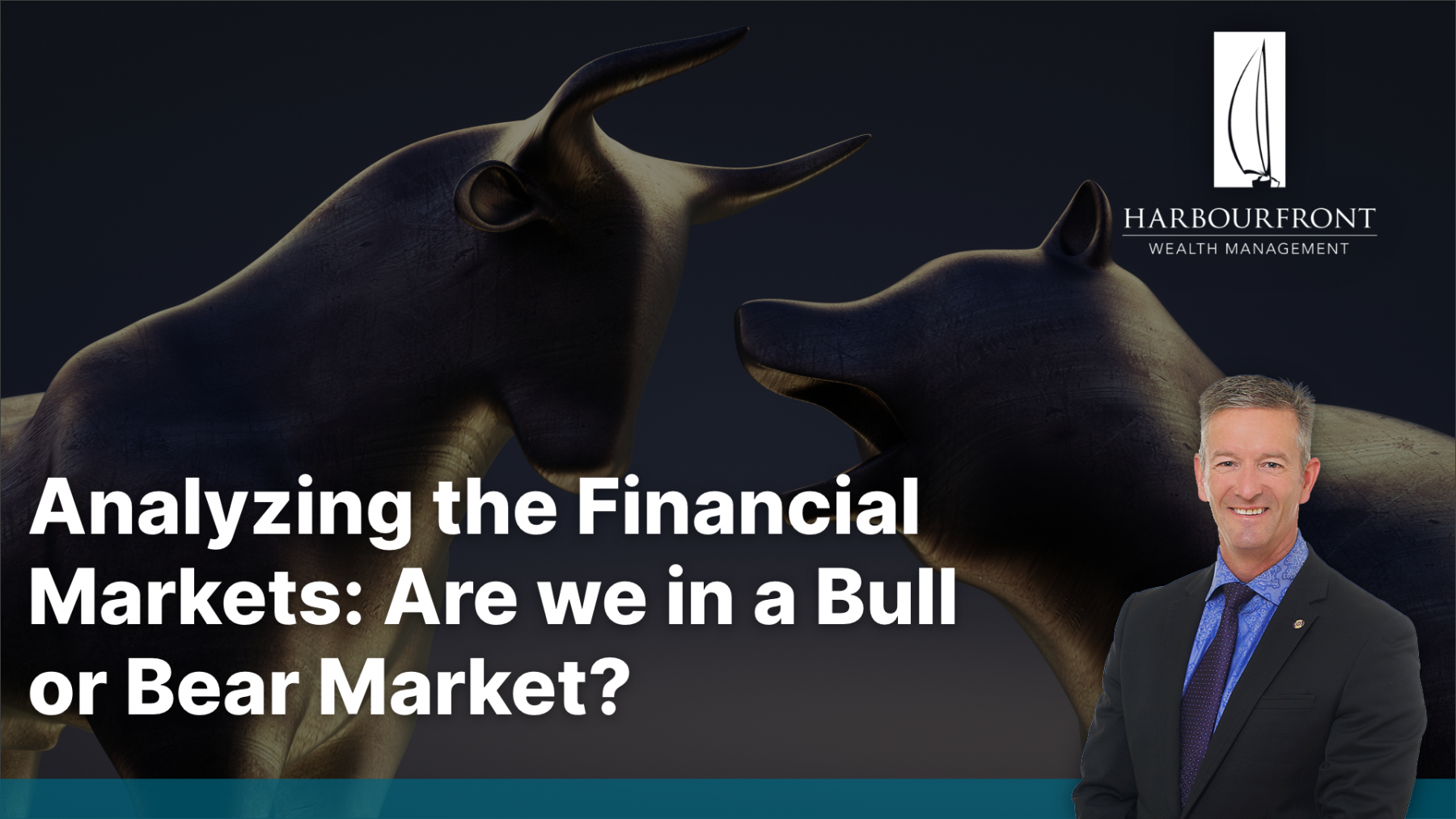Analyzing the Financial Markets: Are we in a Bull or Bear Market?
Hello everyone. Hope all is well.
Here is the next edition of 3 Questions for Bill Richardson.
Question 1: Financial markets have put investors on a roller coaster ride for the past few years. Are we now in a Bull or Bear Market?
To answer this, let’s start with definitions (Source: Investopedia.com)
“A bull market is the condition of a financial market in which prices are rising or are expected to rise. The term “bull market” is most often used to refer to the stock market but can be applied to anything that is traded, such as bonds, real estate, currencies, and commodities.
Because prices of securities rise and fall essentially continuously during trading, the term “bull market” is typically reserved for extended periods in which a large portion of security prices are rising. Bull markets tend to last for months or even years.”
“A bear market is when a market experiences prolonged price declines. It typically describes a condition in which securities prices fall 20% or more from recent highs amid widespread pessimism and negative investor sentiment.
Bear markets are often associated with declines in an overall market or index like the S&P 500, but individual securities or commodities can also be considered to be in a bear market if they experience a decline of 20% or more over a sustained period of time—typically two months or more. Bear markets also may accompany general economic downturns such as a recession. Bear markets may be contrasted with upward-trending bull markets.”
From my point of view, the definition of a bear market is of little use. If, as investors, we don’t know if we are in a bear market until we have experienced a 20% decline, what do we know about what to do when we get there? Sure, running for the door would have saved you from a 40% decline in the S&P 500 in 2000 – 2004 and over 50% in 2008, but in the two declines since 2020, you would have exited the S&P at rock bottom.
The hard part with selling is getting back in.
The second problem I have with bull and bear markets is what index or basket of stocks do you base it on? Do you use the S&P 500, Dow Jones Industrial Average, NASDAQ-100 or the TSX Composite? The S&P is a broader index, but it is what they call Cap Weighted. That is, stocks like Apple make up 7.5% of the index, Microsoft makes up 7%, and the top 10 companies make up over 30%. So, if you say that the S&P 500 is in a bull market, are you just saying that the top 10 companies are in a bull market? If you say the NASDAQ- 100 is in a bear market, are you saying that Technology and Communications stocks which make up almost 70% of the index, are in a bear market?
To be polite and answer your question, I’d say that the S&P 500 had been in a bull market since 2011, and that was interrupted by COVID. Even though we rallied strongly this year, we are still recovering from the 2021 highs. Artificial Intelligence is driving performance in 2023. AI is in a bull market.
Question 2: Interest rates are rising, and the FED is trying to keep inflation under control. Why is the market rallying when it looks like they are trying to bring on a recession?
Since the Fed started tightening in early 2022, and even with the current strong rally, the S&P 500 is actually down almost 4%. Even with year-to-date returns of almost 45%, the top tech companies have been slightly below break-even since early 2022. Only four of eleven sectors are positive over that period. By far, the best-performing sector is Energy, up over 40%, but that is a recovery, as the TSX Capped Energy ETF (XEG) dropped 87% between 2008 and 2020 and can largely be attributed to the Russian invasion of Ukraine. Another notable is the Real Estate sector, which is mostly made up of REITs and is down almost 15%.
Question 3: How do you judge which sectors, industries or stocks are in positive trends?
This really comes down to multi-factor decisions. Too many advisors and investors get caught up in single strategies, like bull or bear markets, value vs. growth, etc. It comes down to owning great companies with consistent and predictable earnings growth that is expected to continue and owning those companies at reasonable prices.
Trends are important. Always trying to be on the right side of demographic trends is important, and finding companies in sectors and industries that are in positive business trends can help improve performance. A couple of examples are the ageing Baby Boomers who are going to need healthcare and the boom in technological innovation.
We also use technical indicators to track the price movements of equities. We use this as a screen to help us identify possible candidates and then dig into the fundamentals to ensure that it ticks our fundamental boxes.
Investing properly is complicated and requires a lot of hard work, but most important is following a proven process and being very disciplined.
Until next time,
Bill

